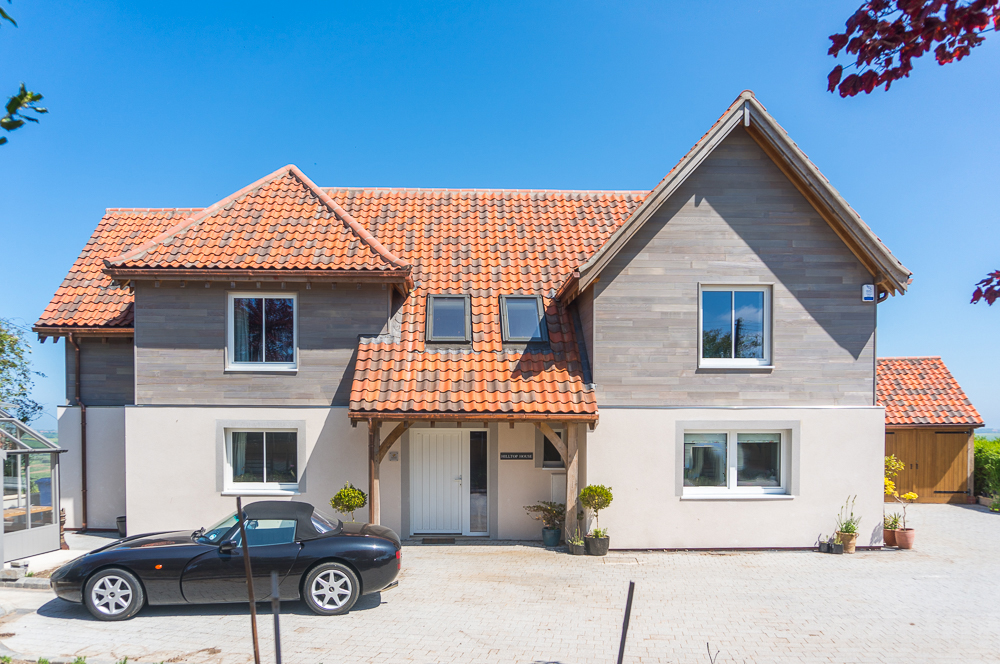Unlocking Energy Efficiency: Exploring PassivHaus and More
In a world where environmental sustainability is rapidly changing, the construction industry is undergoing a transformation. One of the leading innovations in sustainable architecture is the PassivHaus, a concept that has gained prominence for its exceptional energy efficiency. In this blog, we'll delve into the concept of PassivHaus, its key points, and how we can contribute to a greener future.
What is a PassivHaus?
A PassivHaus, or Passive House, is not just a building; it's a commitment to energy efficiency. This revolutionary architectural concept originated in Germany and has been embraced worldwide. At its core, a Passivhaus is designed to minimise energy consumption for heating and cooling, achieving an impressive level of thermal comfort with minimal energy input.
What makes a house a PassivHaus:
Superior Insulation: PassivHaus construction relies on highly efficient insulation. Thick walls and roofs that are designed to minimise heat transfer, ensuring a stable indoor temperature year-round.
Airtightness: A crucial aspect of PassivHaus’ design is its exceptional airtightness. The building envelope is sealed tightly, preventing heat loss.
Ventilation: Controlled mechanical ventilation with heat recovery (MVHR) ensures a constant supply of fresh air while capturing and reusing the heat from outgoing air, further reducing energy consumption.
High-Quality Windows: PassivHaus windows are designed for optimal energy efficiency, usually quadruple glazing, low-emissivity coatings, and insulated frames are featured.
Solar Gain: A PassivHaus is strategically oriented to maximise solar gain during the winter months, reducing the need for additional heating.
Renewable Energy: While a PassivHaus focuses on reducing energy demand, they often incorporate renewable energy sources like solar panels to meet their minimal energy needs.

Quadruple Glazing: The Powerhouse of PassivHaus Windows
Windows play a crucial role in the energy efficiency of a PassivHaus. Quadruple glazing, a cutting-edge technology, is often the preferred choice for these eco-friendly structures. Our highly energy-efficient pivot roof windows with quadruple glazing are PassivHaus-approved! Along with being highly energy efficient, quadruple glazing also has several other advantages:
Unmatched Insulation: Quadruple glazing provides exceptional insulation, minimising heat transfer and maintaining a comfortable indoor environment.
Sound Insulation: Due to the thickness of the windows they heavily reduce noise pollution, creating a peaceful indoor environment.
Condensation Control: These windows are highly effective at preventing condensation, eliminating the risk of moisture-related issues.
UV Protection: Quadruple glazing often includes coatings that block harmful UV rays, protecting furnishings and artwork from fading.
Other Energy-Efficient Window Options
While PassivHaus windows set the gold standard for energy efficiency, at FAKRO we have other great options that are worth considering if you’re not trying to achieve PassivHaus standards:
Triple-Glazed U6 or P5 Windows: Our triple glazing, with three layers of glass, is a significant improvement over standard double-glazed windows. Our triple-glazed glass panes have a u-value of 0.50w/m2k whereas our double-glazed glass panes are 1.00w/m2k
Non-vented Windows: Removing the vent from any of our standard windows can improve the energy efficiency of your home by stopping air from escaping or entering.
Thermo Flashing: By using a thermo flashing instead of a regular flashing you are increasing the insulation around the window and reducing energy loss from your home.
Low-E Coatings: All our windows come with low-emissivity coatings as standard. This helps the windows reduce heat transfer, making them more energy-efficient without the need for additional layers of glazing.
Gas-Filled Insulation: Another feature of our window is that the gaps between the panes contain argon or krypton gas to improve insulation.
Overall contributing to the adoption of PassivHaus principles is a collective effort that can lead to a sustainable future. A key to this is education, raising awareness about PassivHaus design and its benefits can encourage homeowners and builders to embrace energy-efficient construction practices. FAKRO also offers a CPD for architects which touches on the PassivHaus standard and energy efficiency.
If you would like your home or project to be more energy efficient please get in touch with our team at sales@fakrogb.com or call and speak to an expert at 01283 554755.






